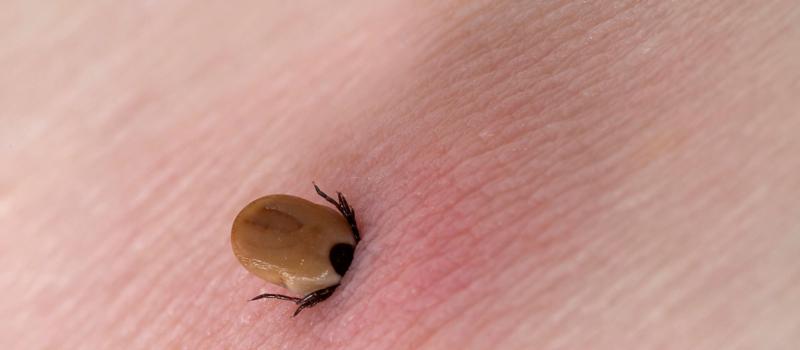The Worst States for Lyme Disease
Posted by Mosquito Squad
February 3, 2022

This fruit-sounding disease is anything but tasteful and pleasant. Lyme disease was first discovered in 1975 after a cluster of arthritis cases occurred in children in a small coastal town in Lyme, Connecticut. Originally named Lyme arthritis, it was later identified as Lyme disease in 1979 after other symptoms began to arise in infected individuals. In 1982 Dr. Willy Burgdorfer discovered that the disease was caused by a deer tick biting an infected animal such as a deer or mouse, and transmitting the bacterium Borrelia burgdorferi, named after the discoverer. This tick-borne illness can be found across America, with most incidents of infection being in the Northeast and Upper Midwest areas.
There are 12 states that have been named the worst states for Lyme disease, based on the Centers for Disease Control and Prevention 2017 data, and they are:
- Maine
- Vermont
- Massachusetts
- Rhode Island
- Pennsylvania
- Connecticut
- New Hampshire
- Delaware
- New Jersey
- Wisconsin
- Minnesota
- Maryland
If you reside in any of these states or know someone that does, here are some things to look out for next time you are in a low vegetation area.
Ticks Prefer Woody Areas
That’s right, our wonderful scenic hiking areas and even backyards can find themselves providing coverage for ticks. Ticks prefer to live in weather conditions with 85% humidity. High humidity allows ticks to absorb the moisture in the air to stay hydrated throughout the season. With this humidity, it is a must that there is also coverage for the ticks from the sun. Low vegetation, high humidity, and temperatures above 44° give ticks the ability to move around the ground with ease.
Most hiking trails, especially in the worst states for Lyme disease, are infamous for low vegetation on their trails, including fallen branches, twigs, leaves, and pine needles. Enjoy your time outdoors, but before going out, there are cautionary actions that everyone should take.
Prevention from Lyme Disease
While going on your hike, make sure to stay in the center of the trail and use caution when hiking off-trail. Always treat your clothing, gear, and exposed skin with products containing permethrin. In fact, the same treatment repellent for mosquitoes can be used for ticks. Avoid sitting on the ground or on logs and refrain from setting your pack or gear on the ground, if possible.
For your backyard, make sure to clean up any low vegetation on the ground that may provide coverage for ticks. Read Mosquito Squad’s 6 C’s of tick control to inform yourself on how to control ticks in your yard. Within two hours of returning back indoors, it is recommended to take a shower and to check specific areas on your body for tick bites. These areas include under the arms, in and around the ears, inside the belly button, back of the knees, in and around the hair, between the legs, and around the waist. These areas are commonly known to be where ticks decide to feed.
Lyme Disease Symptoms
- Early Stages
Within 3 to 30 days of an initial bite from an infected tick, Lyme disease may be transmitted to a host. In early stages, Lyme disease manifests itself through effects on the skin, the joints, and the nervous system. Two or more rashes (not always at the site of the bite) can cause pain, headaches, a stiff neck, abnormal pulse, sore throat, vision change, fever of 100 to 102° F, severe fatigue, and solid red or bull’s eye rash.
- Late Stages
If the symptoms are left untreated, the bacterium travels from the blood stream, making its home in the tissue of the body; it is there where chances of severe side effects develop. Side effects include severe headaches, neck stiffness, additional rashes on other areas of the body, facial palsy, arthritis with severe joint pain and swelling, pain in tendons, heart palpitations, episodes of dizziness or shortness of breath, inflammation of the brain and spinal cord, disabling neurological disorders, shooting pains, numbness, or tingling in the hands or feet.
Treatment for Lyme Disease
During the early stages of Lyme disease, patients are given antibiotics that often lead to rapid and complete recovery. If patients are in the later stages of Lyme disease, they are given an intravenous treatment with antibiotics.
Don’t let your location determine if you are going to be able to enjoy being outside! Call Mosquito Squad today for your backyard tick protection.
